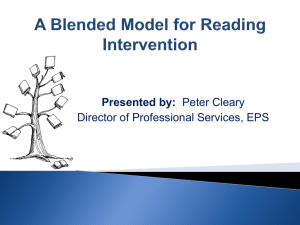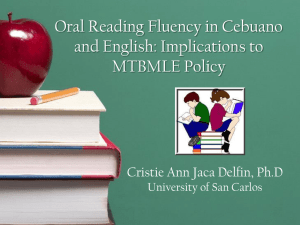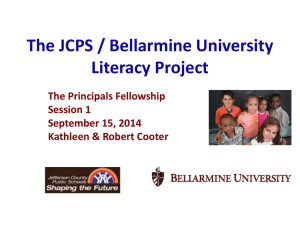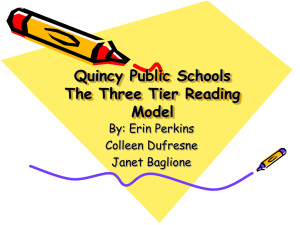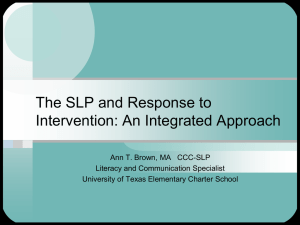ISD 2754, Cedar Mountain Public Schools Local Literacy Plan
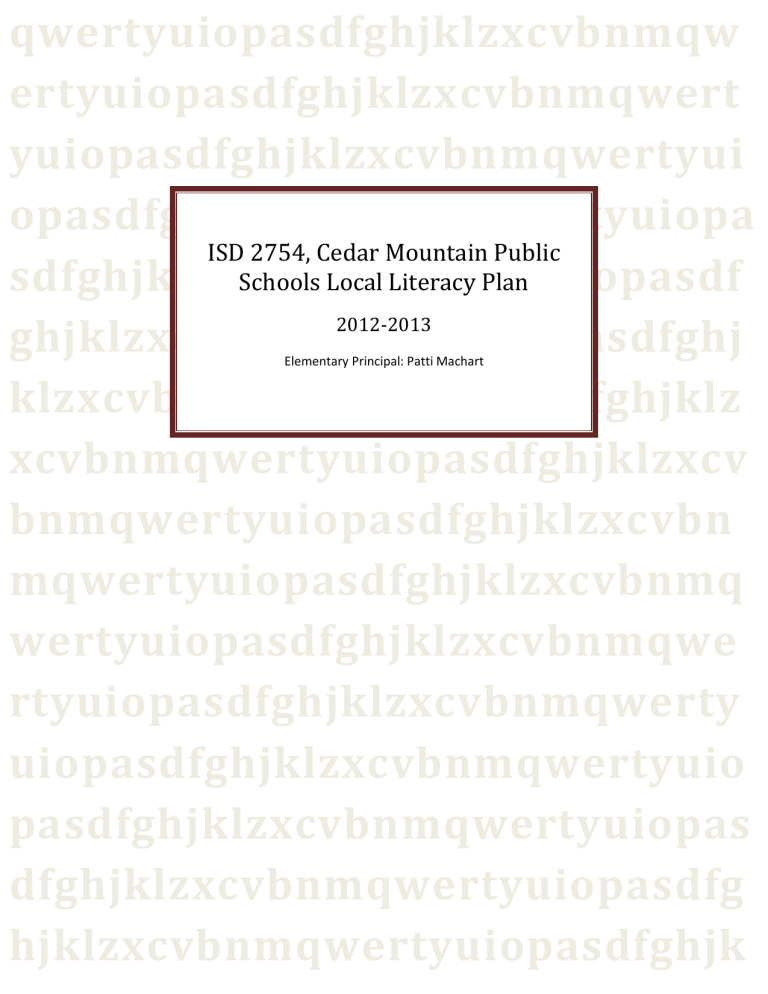
qwertyuiopasdfghjklzxcvbnmqw ertyuiopasdfghjklzxcvbnmqwert yuiopasdfghjklzxcvbnmqwertyui opasdfghjklzxcvbnmqwertyuiopa sdfghjklzxcvbnmqwertyuiopasdf ghjklzxcvbnmqwertyuiopasdfghj
Elementary Principal: Patti Machart
klzxcvbnmqwertyuiopasdfghjklz xcvbnmqwertyuiopasdfghjklzxcv bnmqwertyuiopasdfghjklzxcvbn mqwertyuiopasdfghjklzxcvbnmq wertyuiopasdfghjklzxcvbnmqwe rtyuiopasdfghjklzxcvbnmqwerty uiopasdfghjklzxcvbnmqwertyuio pasdfghjklzxcvbnmqwertyuiopas dfghjklzxcvbnmqwertyuiopasdfg hjklzxcvbnmqwertyuiopasdfghjk lzxcvbnmrtyuiopasdfghjklzxcvbn
District 2754, Cedar Mountain Public
Schools
Local Literacy plan
Approved by Cedar Mountain’s Board of Education
The purpose of this literacy plan is to ensure that ALL students will achieve gradelevel proficiency and read well by Grade 3.
Literacy Plan Summary:
Our district is currently using MacMillan/McGraw-Hill Treasures, a basal program to teach reading in kindergarten through grade 3. Included in this program are components for phonemic awareness, phonics, vocabulary, comprehension, fluency, writing and grammar. To enhance this curriculum, our district has an elementary library with a variety of fiction and nonfiction reading materials, covering a wide range of reading levels. Each classroom also has their own reading center where students can enjoy books and other resources selected by their classroom teacher.
All K-3 students receive classroom reading instruction for a minimum of 90 minutes each day.
30 of those minutes (three times a week) will be in an ability based reading group. During that time students will use leveled readers to enhance and/or remediate their reading skills. Relevant technology engages students in meaningful learning activities. A variety of technologies
(interactive white boards in each classroom, mobile labs, classroom computer lab, and student response systems) have been integrated into the curriculum and instruction to meet the needs of the district’s diverse learners. The district also uses Accelerated Reader (AR), which is a computerized program that tests basic reading comprehension. Students select books from their reading level, read independently or with a buddy and take an independent comprehension test on the computer. Each book is worth a certain number of points based on its length and reading level. A school wide reward system encourages students to participate in this program.
Students in grades 2-5 will use the Study Island program to practice grade level reading standards. During the spring months, a “Study Island Challenge” will encourage and reward students for increased use of the program prior to end of the year testing on the standards.
All students in grades K-3 are given the AIMSweb screening/benchmarking assessment three times throughout the course of the year in fall, winter, and spring. Using this data, along with data from Measures of Academic Progress (MAP) struggling and at-risk students are identified and referred for interventions. The problem solving team assists classroom teachers on specific interventions that are based on further assessments, and the interventions are implemented through the collaborative efforts of the classroom teacher and other specialists. Each student’s progress is monitored regularly (weekly) and if the intervention selected is not working, another intervention is selected and implemented. Students not responding to these interventions are referred for special education services. Parents are kept informed of their child’s progress at every step of the process.
The goal of the Cedar Mountain district is to ensure that all learners successfully achieve the
Minnesota K-12 Academic Standards in English Language Arts (2010) for their grade level. The standards are aligned with the district’s curriculum and a map is in place to ensure that the standards are taught within the time available.
Specific information is included in the K-3 Literacy Plan that follows this summary. For those who are interested in learning more about Cedar Mountain’s literacy program, please contact:
Patti Machart at 507-557-2251(phone) or pmachart@cedarmt.org
(email).
Literacy Plan Goals and Objectives:
Overarching Goal: All students will read at grade-level by Grade 3 as determined by the
Reading Minnesota Comprehensive Assessments (MCAs).
Objectives:
Each year educators will review and disaggregate reading data at grade levels K, 1, 2, & 3.
Proficiency, growth and trend data will be analyzed and used to set specific learning targets for each child and for each classroom. These learning targets will be shared with parents in the fall and reviewed periodically with students throughout the year. Pre-K data will be accessed and utilized and shared with parents during January conferences.
The reading teachers review, annually, the effectiveness of current pedagogical practices including core instruction, differentiation, remediation and intervention.
Curriculum resources will be aligned to the most current standards. Standards will be prioritized and pacing guides developed.
Formative assessments will be used to modify instruction and to identify students who are not on pace to meet proficiency. Students not on track will follow the local intervention plan.
Professional Learning Communities will be implemented to analyze the effectiveness of current literacy practices. Special attention will be paid to closing the achievement gaps. Best practices will be shared.
Extended day and/or extended year programs will be utilized to provide targeted assistance to help struggling and at-risk students achieve grade-level proficiency. 21 st
Century for grades 3-5 will be replaced with Targeted Services for grades 1-5. Individual learning plans will be written for each participant and reviewed annually with parents.
Current practices and supports that have demonstrated success/data leading to improved results for groups of students not yet proficient:
New Treasures reading curriculum ( McMillan McGraw Hill – implemented 2010)
SMART boards utilized for reading instruction
90 minutes of reading per grade level
Weekly Assessments
Accelerated Reading encouraged and monthly rewards given
Study Island use is encouraged and a school wide “challenge” with incentives occurs in the spring
FRED program held in spring
Scholastic Book Fairs held twice a year
Library time weekly where students read independently or are read to
Students who do not reach their “target data points” receive additional reading support from Title I staff
Cedar Mountain assessment data- Spring 2012
Kindergarten Letter Sound Fluency
90%
80%
70%
60%
50%
40%
30%
20%
10%
0%
77%
23%
2012
At or above grade level Below grade level
Kindergarten Blending/Segmenting
Fluency
90%
80%
70%
60%
50%
40%
30%
20%
10%
0%
74%
26%
2012
At or above grade level Below grade level
90%
80%
70%
60%
50%
40%
30%
20%
10%
0%
Kindergarten Nonsense Word Fluency
90%
80%
70%
60%
50%
40%
30%
20%
10%
0%
71%
29%
At or above grade level Below grade level
First Grade Nonsense Word Fluency
36%
64%
2012
2012
At or above grade level Below grade level
1st Grade Oral Fluency
90%
80%
70%
60%
50%
40%
30%
20%
10%
0%
55%
45%
At or above grade level Below grade level
2nd Grade Oral Fluency
90%
80%
70%
60%
50%
40%
30%
20%
10%
0%
67%
At or above grade level
33%
Below grade level
2012
2012
90%
80%
70%
60%
50%
40%
30%
20%
10%
0%
90%
80%
70%
60%
50%
40%
30%
20%
10%
0%
52%
48%
At or above grade level Below grade level
3rd Grade Oral Fluency
63%
2nd Grade NWEA
37%
At or above grade level Below grade level
2012
2012
3rd Grade NWEA
90%
80%
70%
60%
50%
40%
30%
20%
10%
61%
39%
2012
0%
At or above grade level Below grade level
WRITE A SMART GOAL BASED ON THE THIRD GRADE DATA
By the end of 2013, 85% of third graders will meet or exceed the grade level standards as tested on the MCA Reading tests.
By the end of 2013, 70% of the third graders will be at or above grade level as measured on the Oral Reading Fluency
By the end of 2013, 70% of the third graders will be at or above grade level as measured on the NWEA tests.
Process of Assessment:
The classroom teacher will administer the screening and diagnostic assessments listed below.
Measures of Academic Progress (MAP) and MAP for Primary Grades are used as benchmark assessments. They are adaptive and sequential tests used to measure student growth. The 2011
NWEA RIT Scale Norms provide growth and status norms in the following content areas:
Reading, Language Usage, and Mathematics. The RIT scores for each grade level in Reading and Language Usage are listed in the following charts:
2011 Reading Status Norms (RIT Values)
Grade Beginning-of-Year Mean Middle-of-Year Mean
K
1
142.5
160.3
151.0
170.7
2
3
4
175.9
189.9
199.8
183.6
194.6
203.2
End-of-Year Mean
157.7
176.9
189.6
199.2
206.7
5
6
7
8
207.1
212.3
216.3
219.3
209.8
214.3
218.2
221.2
212.3
216.4
219.7
222.4
9
10
11
221.4
223.2
223.4
221.9
223.4
223.5
222.9
223.8
223.7
2011 Language Usage Status Norms (RIT Values)
Grade Beginning-of-Year Mean
2 175.4
Middle-of-Year Mean
185.3
End-of-Year Mean
190.0
3
4
5
191.1
200.9
208.0
196.5
204.4
211.0
200.3
207.0
212.9
6
7
8
9
10
11
212.3
215.8
218.7
220.6
221.9
222.1
214.4
217.3
220.2
221.0
222.2
223.7
216.2
218.7
221.3
221.8
222.7
223.3
AIMSweb is used as a screening/benchmark assessment. The target scores for each grade level are listed in the following charts:
Kindergarten AIMSweb Assessments
Fall
Assessment Name [Target Score]
Winter
Assessment Name [Target Score]
Spring
Assessment Name [Target Score]
Letter Naming Fluency [16]
Letter Sound Fluency [4]
Letter Naming Fluency [39] Letter Naming Fluency [48]
Letter Sound Fluency [23] Letter Sound Fluency [36]
Phoneme Segmenting Fluency [27] Phoneme Segmenting Fluency [45]
Nonsense Word Fluency [21] Nonsense Word Fluency [34]
Fall
Assessment Name [Target Score]
Letter Naming Fluency [44]
First Grade AIMSweb Assessments
Winter
Assessment Name [Target Score]
Spring
Assessment Name [Target Score]
Letter Sound Fluency [29]
Phoneme Segmentation Fluency [38] Phoneme Segmenting Fluency [49]
Nonsense Word Fluency [29] Nonsense Word Fluency [49] Nonsense Word Fluency [62]
Reading – CBM [22]
(Oral Reading Fluency)
Reading – CBM [52]
(Oral Reading Fluency)
Fall
Assessment Name [Target Score]
Second Grade AIMSweb Assessments
Winter
Assessment Name [Target Score]
Spring
Assessment Name [Target Score]
Reading – CBM [43]
(Oral Reading Fluency)
Reading – CBM [72]
(Oral Reading Fluency)
Reading – CBM [90]
(Oral Reading Fluency)
Fall
Assessment Name [Target Score]
Third Grade AIMSweb Assessments
Winter
Assessment Name [Target Score]
Spring
Assessment Name [Target Score]
Reading – CBM [70]
(Oral Reading Fluency)
Reading – CBM [91]
(Oral Reading Fluency)
Reading – CBM [109]
(Oral Reading Fluency)
Reading –Maze [12]
(Comprehension)
Reading –Maze [15]
(Comprehension)
Reading –Maze [16]
(Comprehension)
Students who do not meet the target score as listed above will undergo a diagnostic assessment to determine specific skill deficit(s) in one of the five strands of reading, using one or more of the following research-based assessments: curriculum based diagnostic tests, intervention based pre- and post-tests, MAPS goal strands, or the Gallistel-Ellis - Revised (GE-R) test of Coding Skills.
Based on these diagnostic assessments, instruction and interventions will be matched to the student’s needs in one or more of the five pillars of reading (phonemic awareness, phonics, fluency, vocabulary, and comprehension).
Following the assessments, parents will receive notification informing them of the results, supports, interventions and further diagnostic assessments that will be used to help their child meet the reading goals for their grade level. Parents will be invited in to visit about their child’s educational needs and asked if they have any questions. A list of potential supports that the parents can use to assist the child in achieving grade-level proficiency will be provided to the parent. A complete outline of the parent communication and involvement section is below.
Progress monitoring data will be collected weekly and analyzed on a monthly basis. The following process will be used:
A.
Based on prior spring NWEA and AIMS data points, students will be placed in differentiated reading groups based on their abilities. Students in the
“approaching” group will be progress monitored weekly.
B.
Examine the student chart after 4-6 data points have been plotted and a trend line has been generated.
C.
Implement an intervention if a student has 4 data points clearly and consistently below the aim line. (Title I, classroom teacher, or AmeriCorps)
D.
Continue the intervention until the student meets the grade-level benchmark (if the student has 4 data points on or above the aim line.) If the child has not met the criteria in the set amount of time, a new intervention or a change in duration of the intervention will be put in place.
E.
Refer the student to the problem-solving team if the student has 4 data points below the goal line for the second intervention.
F.
Discontinue the intervention when the student has met the grade level benchmark.
Exit criteria: 3-4 data points above the aim line with one data point at or above the next benchmark target.
G.
Continue progress monitoring at least three times following the discontinuation of intervention to assure that progress has been maintained.
Entrance criteria are based on a triangulation of assessment data with classroom teacher input.
When the student scores three to four data points above the aim/goal line with one data point at or above the next benchmark target, the student will be exited from the supplemental intervention services.
Parent Communication and Involvement:
The district has developed a parent communication letter that will share the state-identified grade-level standards and how their child is progressing toward meeting these standards. The letter will include the core literacy instructional practices and the intervention supports that are used with students who are not on track to achieve benchmark targets that reflect grade-level
content standards. The purpose of providing additional time on task, through these intensive interventions, is to effectively accelerate student achievement to match grade level expectations.
Parent Communication plan
1.
In the beginning of the year there will be an explanation of the core literacy instructional practices and the multi-level systems of support as implemented in the district. This will include an explanation of entrance and exit criteria for students needing interventions, assessments used, data collected, problem-solving practices used when indicated by diagnostic and progress monitoring data, and classroom supports used with all students.
(Handout)
2.
Assessment results will be provided to parents within 10 days. (MAPS and AIMS)
3.
Parents of students who need supplemental instruction will be informed by the district that their student is receiving these services and goals will be explained at parent teacher conferences.
4.
An additional explanation of the literacy program and supports will occur in November and February during parent/teacher conferences.
5.
Parents of students receiving interventions will receive monthly progress reports.
6.
All parents of K and 1 students will receive a parent letter at least three times a year with suggestions on how to help strengthen their child’s literacy skills, based on the results of their diagnostic assessments.
7.
A reading tab on our district’s website will provide parents with resources and inter-net links that will provide extra practice opportunities for students.
8.
FRED (Fathers Reading Every Day) event will be held annually to promote reading literacy with fathers and male figures in our district. Resources and tools will be provided and good reading strategies will be modeled.
The following are resources and tools, based on the five pillars of reading, for parents, caregivers, and/or community members to use in support of literacy practices at home:
Could include Webinars & Websites
Study Island
Accelerated Reading Program
Scholastic.com
www.starfall.com
www.scholastic.com
Book-it Program
Timberwolves Reading Program
Morgan Public Library reading programs
Multi-Tiered Systems of Support:
A Model of School Supports and the Problem Solving Process
ACADEMIC SYSTEMS
Tier 3: Intensive, Individual
Interventions
Students who need individualized interventions.
Tier 2: Targeted Group
Interventions
Students who need more support in addition to the core curriculum.
Tier 1: Core Curriculum
All students, including students who require curricular enhancements for acceleration.
The first level of support occurs in the classroom with 90 minutes of core instruction delivered by the classroom teacher using the district’s reading curriculum that is aligned with the 2010 English Language
Arts Standards. Research-based reading instruction will address the 5 strands of reading (phonemic awareness, phonics, fluency, vocabulary, and comprehension). Teachers differentiate instruction in small groups, according to the needs of their diverse learners during a “Power Half Hour” model. A daily 30 minute block will be utilized to teach students in each grade at three different ability based groups taught by classroom teachers, a reading teacher, and Title I staff.
Based on screening and diagnostic assessments, the second level of support identifies students not meeting grade-level targets who are, then, provided supplemental reading interventions according to their skill deficit(s). This level of support will be provided by Title I paraprofessionals, classroom teachers, volunteers, an AmeriCorps literacy tutor, or reading teacher. Frequency and duration will be determined by the classroom teacher and/or Problem Solving Team.
Students not responding well to the interventions provided at the second level are referred to and receive the most intensive and individualized level of support outside of the 90 minutes of core instruction. This
instruction could be provided by the Reading teacher or Title I staff. Students receiving Special Education services are included at this level.
The Multi-tiered systems of support can be traced to the work on data-based decision making by Deno and Mirkin (1977) and the US Department of Education’s report
A Nation at Risk (1983). The framework is a systematic use of assessment data to efficiently allocate resources to improve learning for all students
(Burns and VanDerHeyden, 2006). A meta-analysis of research found that multi-tiered systems of support led to improved outcomes such as fewer children referred to and placed into special education programs. Additionally, results included higher achievement scores and reduced behavioral difficulties among all students (Burns, Appleton, and Stehouwer, 2005). Children at-risk for reading failure demonstrated improved reading skills (Marston, Muyskens, Lau, Canter, 2003; Tilly, 2003).
Scientifically-Based Reading Instruction:
The scientifically-based reading curriculum Cedar Mountain uses is MacMillan/McGraw-Hill Treasures which has been aligned with the Minnesota Academic Standards in English Language Arts (2010). Small group instruction is used to differentiate for our diverse learners.
Research-Based Interventions
Reading Mastery / Corrective Reading /
Soar to Success / Triumphs Reading/
Headsprout/ Target Spelling/Spelling through Morphographs
TIER 3
Headsprout/ Soar to Success / Early
Success / A-Z Skills Tutor/ Fluency
Practice/ Road to the Code/ Treasures
Series Interventions
TIER 2
Treasure Series Interventions / Word
Squares/ /Power 1/2 Hour Groups/ Study
Island/ AR
TIER 1
Professional Development:
The Cedar Mountain District has several options available for Professional Development. Based on student performance data, the district has determined small group instruction will be the Reading/Literacy
Professional Development focus for the 2012-2013 school year.
Professional Development is provided through:
Grade-Level Common Planning Time
Professional Learning Communities (PLCs)
Regional Professional Development offered by Coop
Peer Coaching/observations
Basal Training from Company Representative
RtI intervention support from RtI specialist from Coop
Literacy Leadership Training – 4 days throughout year provided by coop
Mentoring provided to non-tenure teachers
Annually, in August, a data-mine will be held. Data will be disaggregated and analyzed. Results will be shared with the district staff development team, who will then create SMART student goals and offer
Professional Development opportunities designed to address the needs identified by the data.
English Learners and Other Diverse Populations:
The district currently assesses all English Learners using the World-Class Instructional Design and
Assessment (WIDA) assessments (W-APT and ACCESS).
W-APT stands for the WIDA-ACCESS Placement Test. It is an English language proficiency "screener" test given to incoming students who may be designated as English Learners, typically administered only to new students. It assists educators with programmatic placement decisions such as identification and placement of ELs. The W-APT is one component of WIDA's comprehensive assessment system.
Assessing Comprehension and Communication in English State-to-State for English Learners (ACCESS for ELs) is a secure, large-scale English language proficiency assessment given to Kindergarten through
12th graders who have been identified as English Learners (ELs). It is given annually in Minnesota beginning in the 2011-2012 school year to monitor students' progress in acquiring academic English.
W-APT and ACCESS for ELs test items are written from the model performance indicators of WIDA's
•
•
•
• five English Language Proficiency (ELP) standards:
• Social & Instructional Language
Language of Language Arts
Language of Mathematics
Language of Science
Language of Social Studies
•
•
Test forms are divided into five grade-level clusters:
• Kindergarten
Grades 1-2
Grades 3-5
•
•
Grades 6-8
Grades 9-12
Each form of the W-APT test assesses the four language domains of Listening, Speaking, Reading, and
Writing.
Within each grade-level cluster (except Kindergarten), ACCESS for ELs consists of three forms: Tier A
(beginning), Tier B (intermediate), and Tier C (advanced). This keeps the test shorter and more appropriately targets each student’s range of language skills.
Based on the W-APT and ACCESS assessments, students who qualify for ESL support will receive the intervention of focused language skill development from a licensed ESL teacher, in addition to the core instruction.
This district has 0 English Learners and 18% of our students that are non-white. Based on these demographics, resources will be allocated and professional development will be determined by the
Leadership Team annually.
Instructional materials will be analyzed for its culturally appropriate content and purchased during the district’s curriculum cycle for core subjects. EL curriculum materials and interventions, used to develop language skills, will be updated as-needed or developed on-site.
Training / Coaching / Resources available for all school staff:
Integration Activities offered through the Cottonwood River Integration Collaborative
EL teachers take on trainer/coaching roles with regular education teachers
Outside expert comes in to train staff
Sending lead teachers to appropriate trainings
The W-APT and ACCESS assessments are used with EL students. These assessments are used in conjunction with the previously mentioned assessments administered to the entire student body:
AIMSweb, MAP, and MCAs. The disaggregated data compiled from each of those assessments will be used to improve programs, strengthen core instruction, and accelerate the acquisition of oral language and literacy skills of ELs. The reading teachers are responsible for accessing, analyzing, interpreting, and applying the disaggregated data.
Communication system for annual reporting:
Student assessment data will be submitted to the Minnesota Department of Education annually and will be updated on this document and posted on our website.
Stakeholder feedback:
1.
Was the information easy to find?
2.
Is this document useful?
3.
Were the reading strategy links useful in working with your child?
4.
Did you feel supported by the school district to help your child read well by 3 rd grade?
Tier 1
Core Curriculum
90 minutes/day
Provided by classroom teacher
Screening/Benchmark tested 3 times per year
Meets or exceeds grade level benchmark targets
Continue Core
Curriculum
90 minutes/day by classroom teacher
If not meeting grade level benchmark targets, administer diagnostic assessment to determine specific instructional needs.
Tier 2
Tier 3
Intervention with Small
Group for 30 minutes for
4-5 days/week
Progress Monitor
Weekly
If 3 to 4 data points are consecutively above the Aim
Line, with one data point at or above the next benchmark target, exit from intervention.
If 4 data points are consecutively below the Aim
Line, change the intervention.
Tier 3
Special Education Title I /Reading teacher
Push-in or Pull-Out
Intervention with Small
Group for 30 minutes for 4-
5 days/week
If successful, determine how this level of support will be maintained.
Progress monitor twice a week
If not successful, refer for a special education evaluation.
